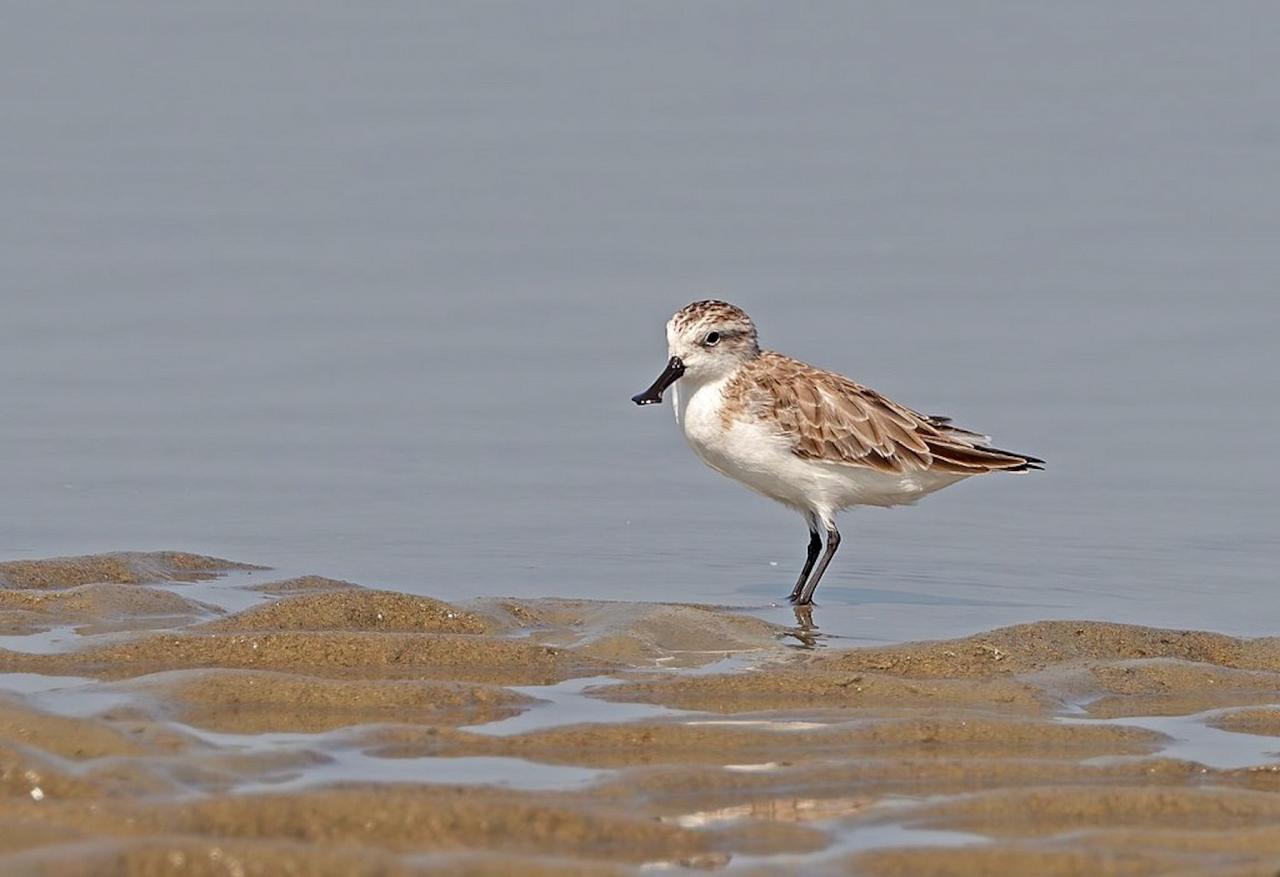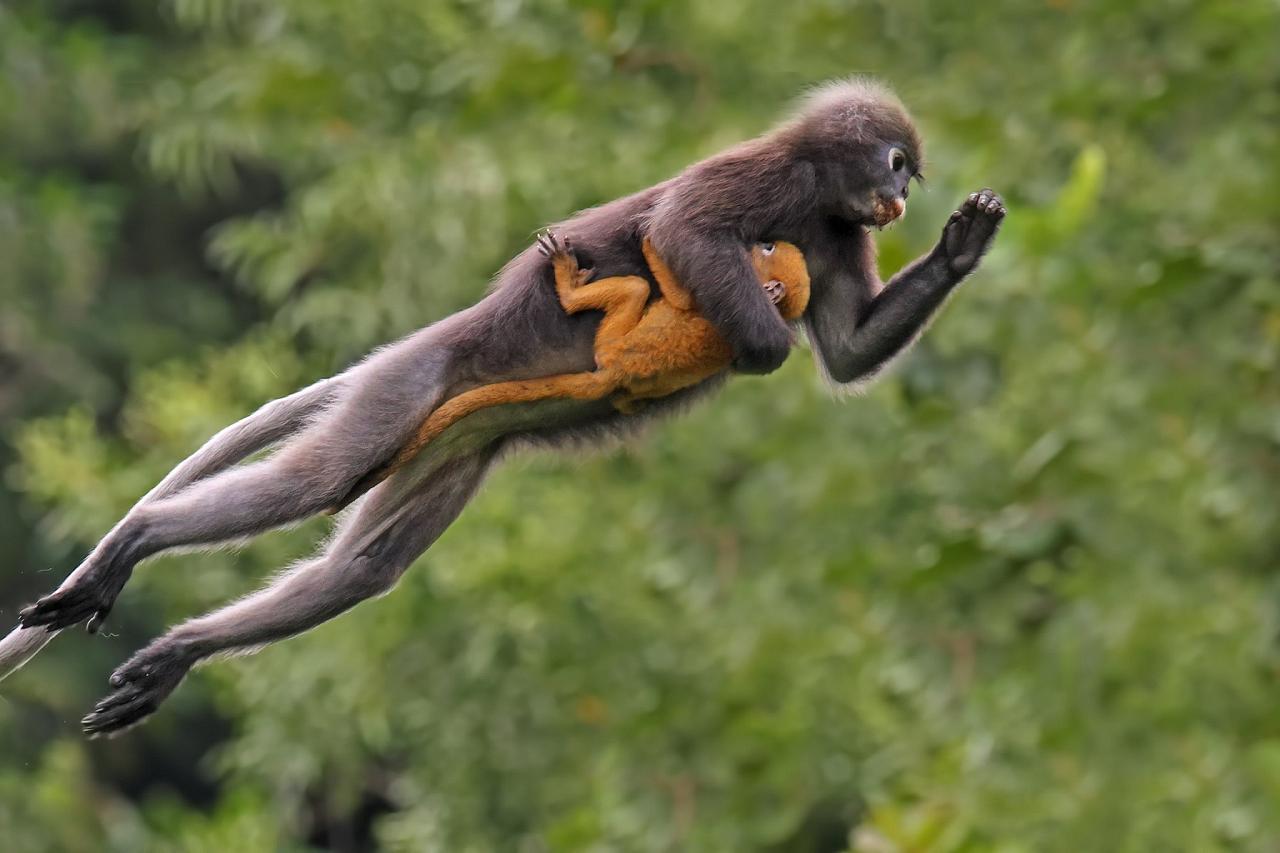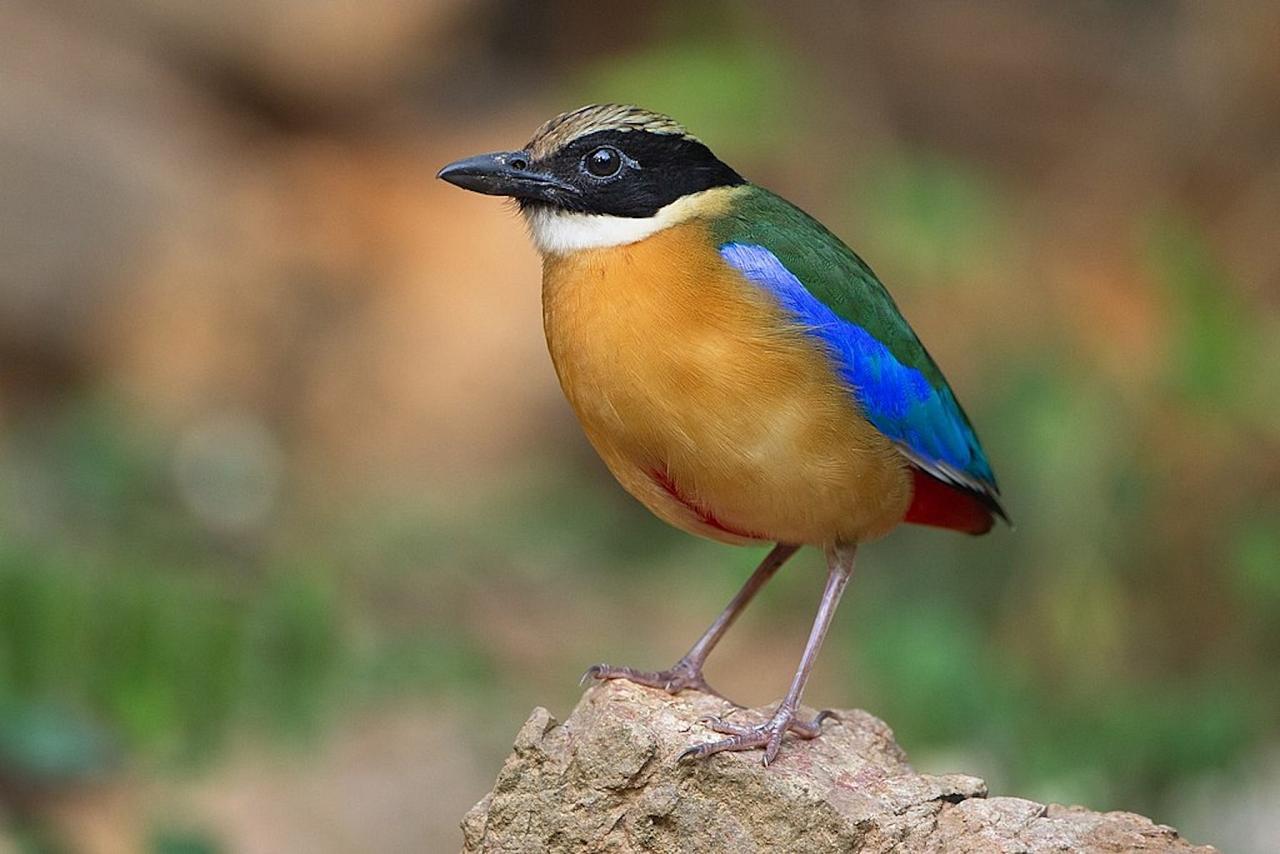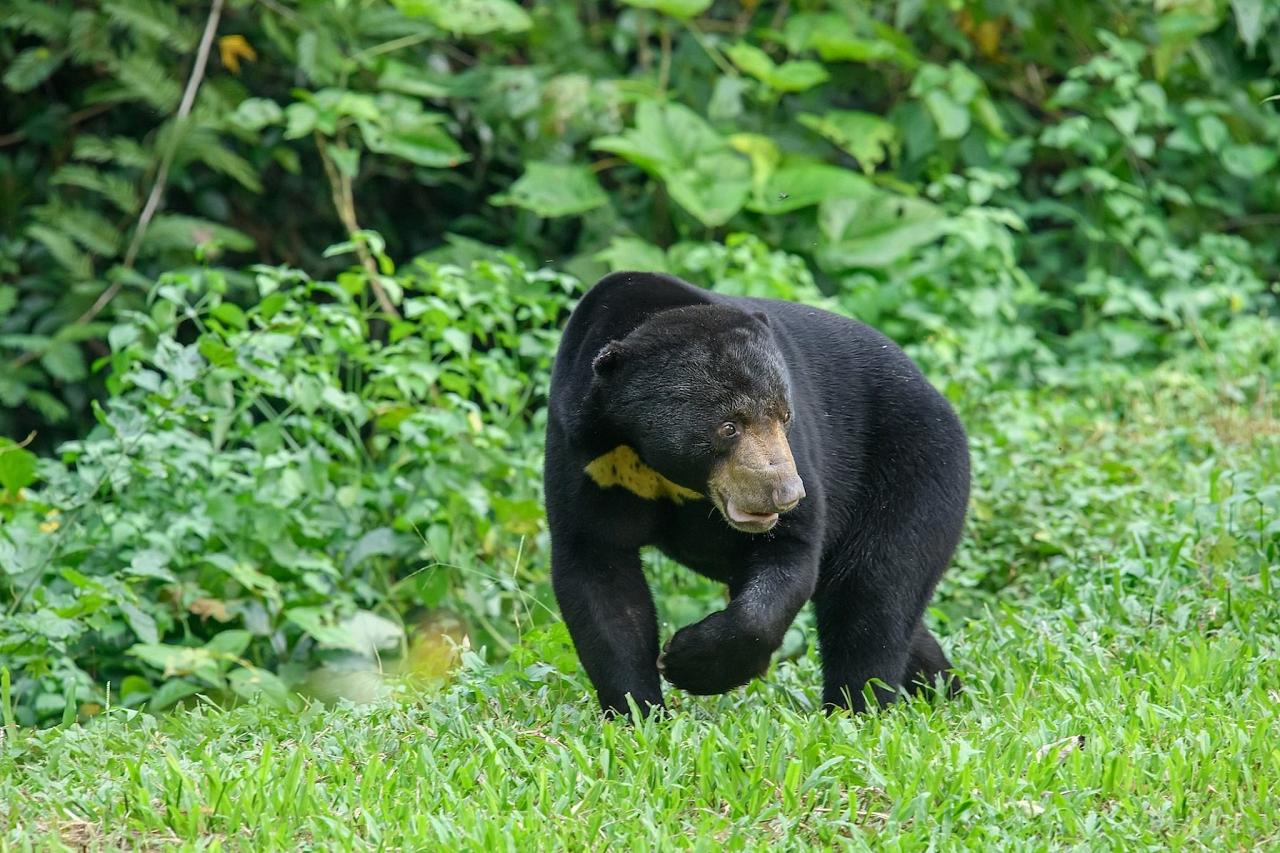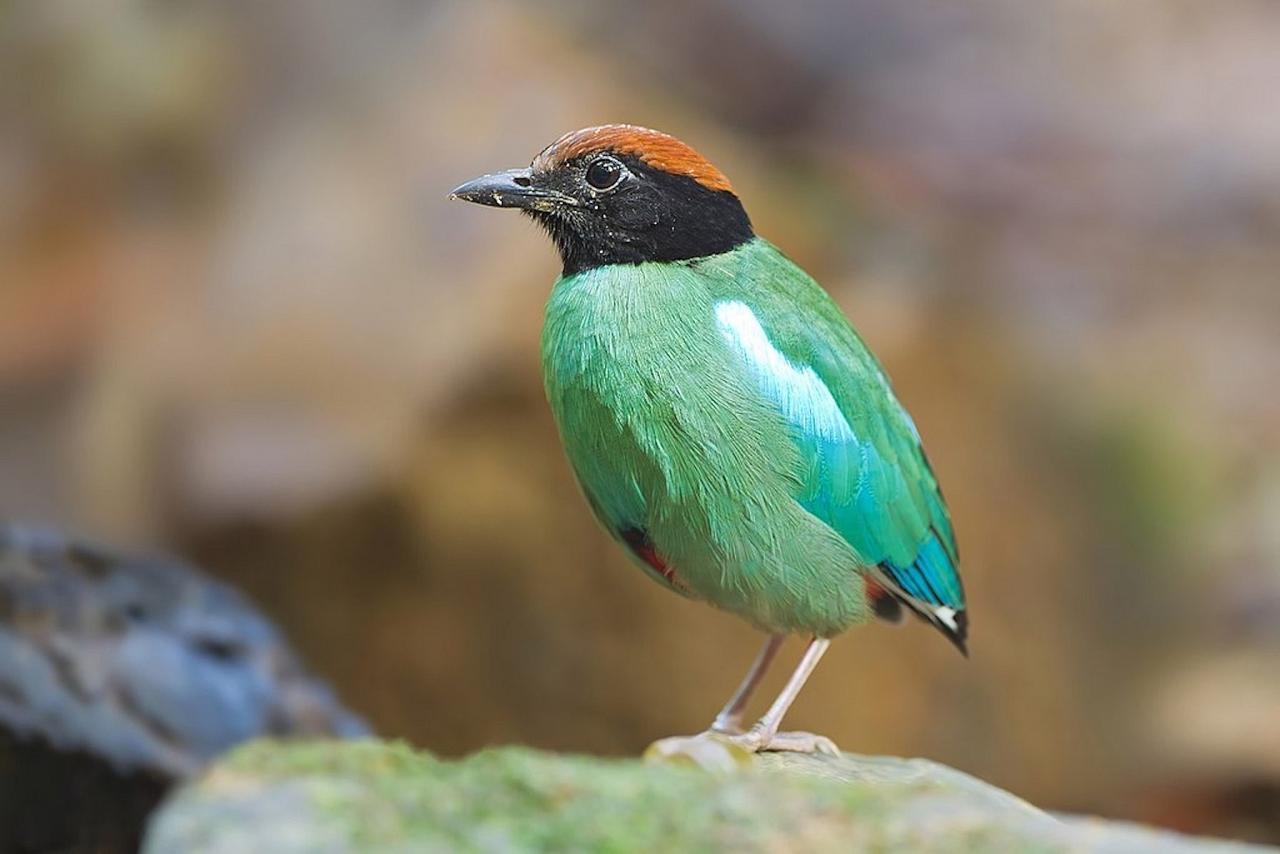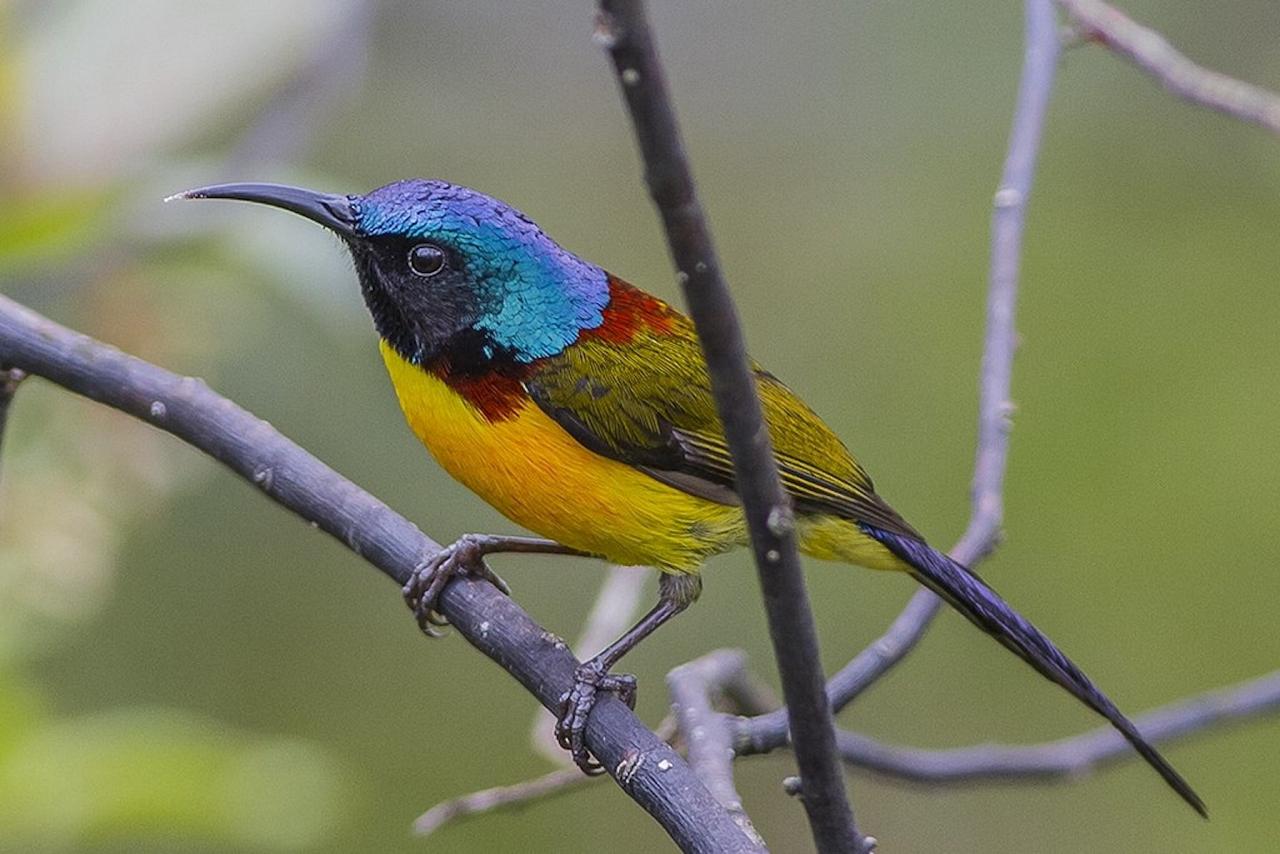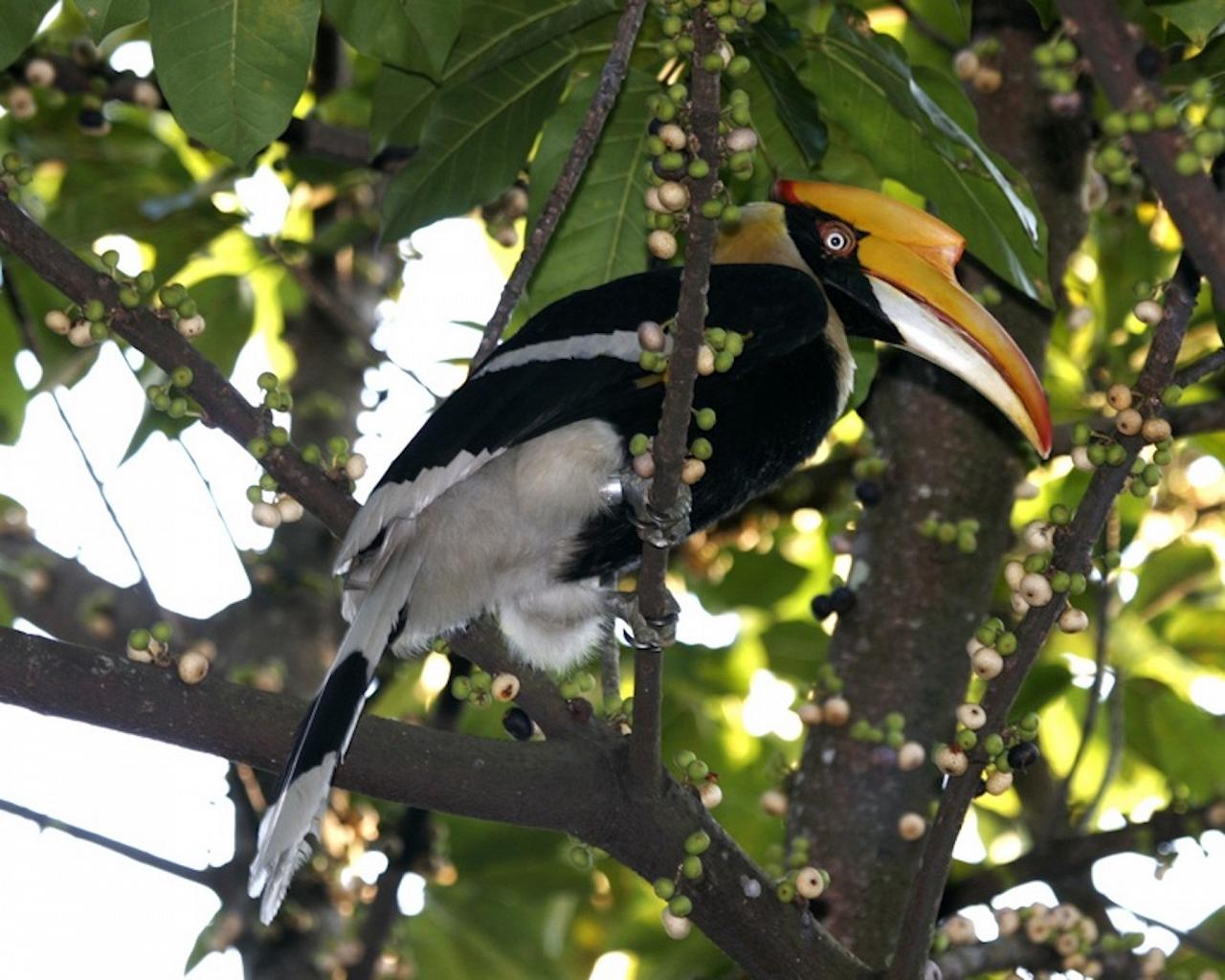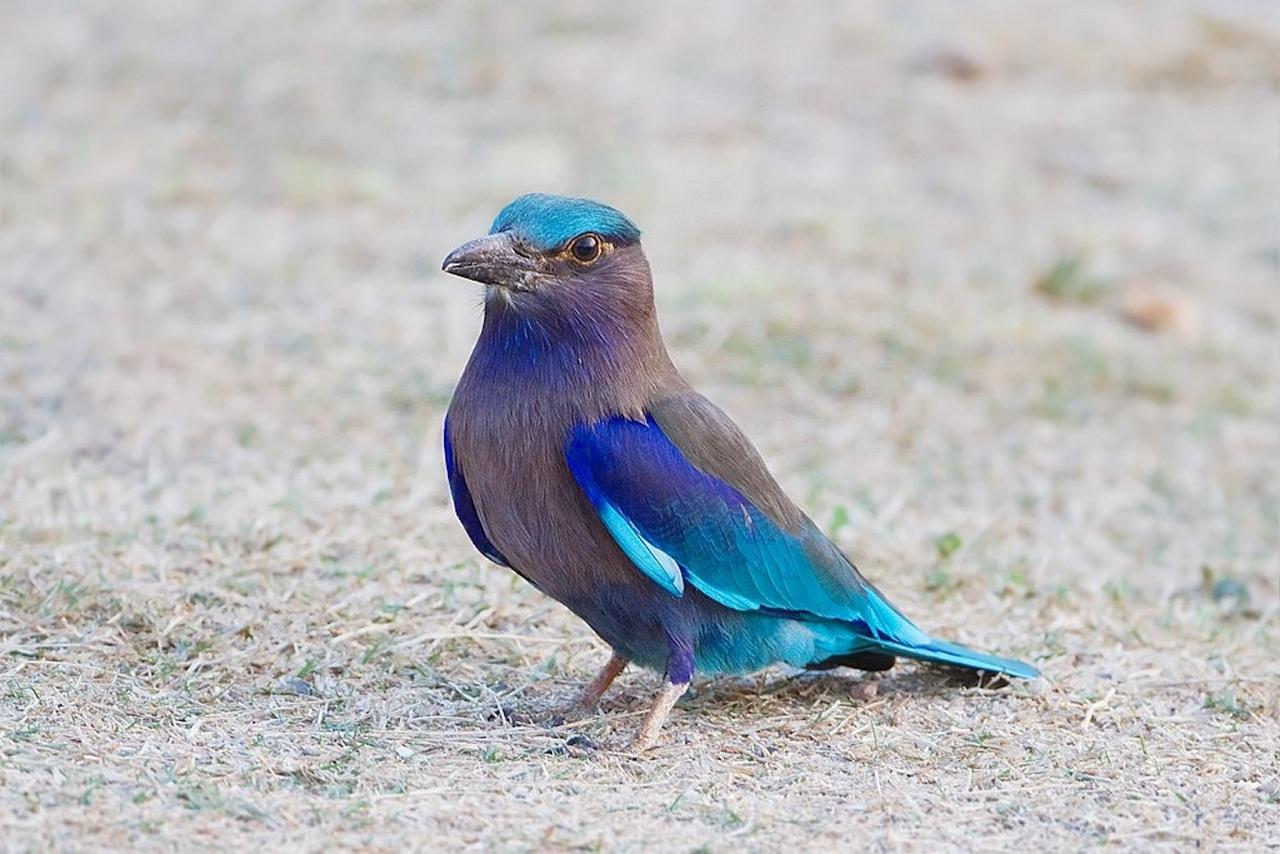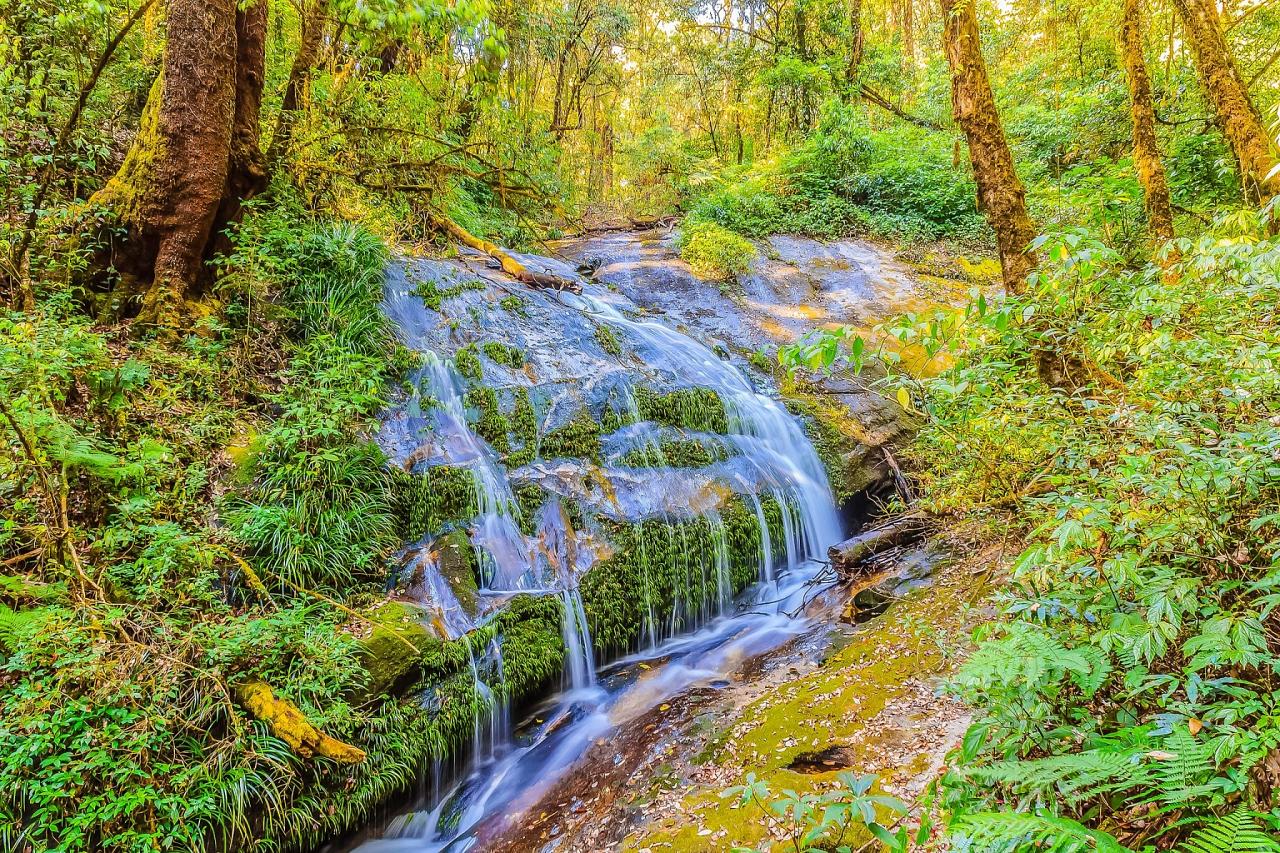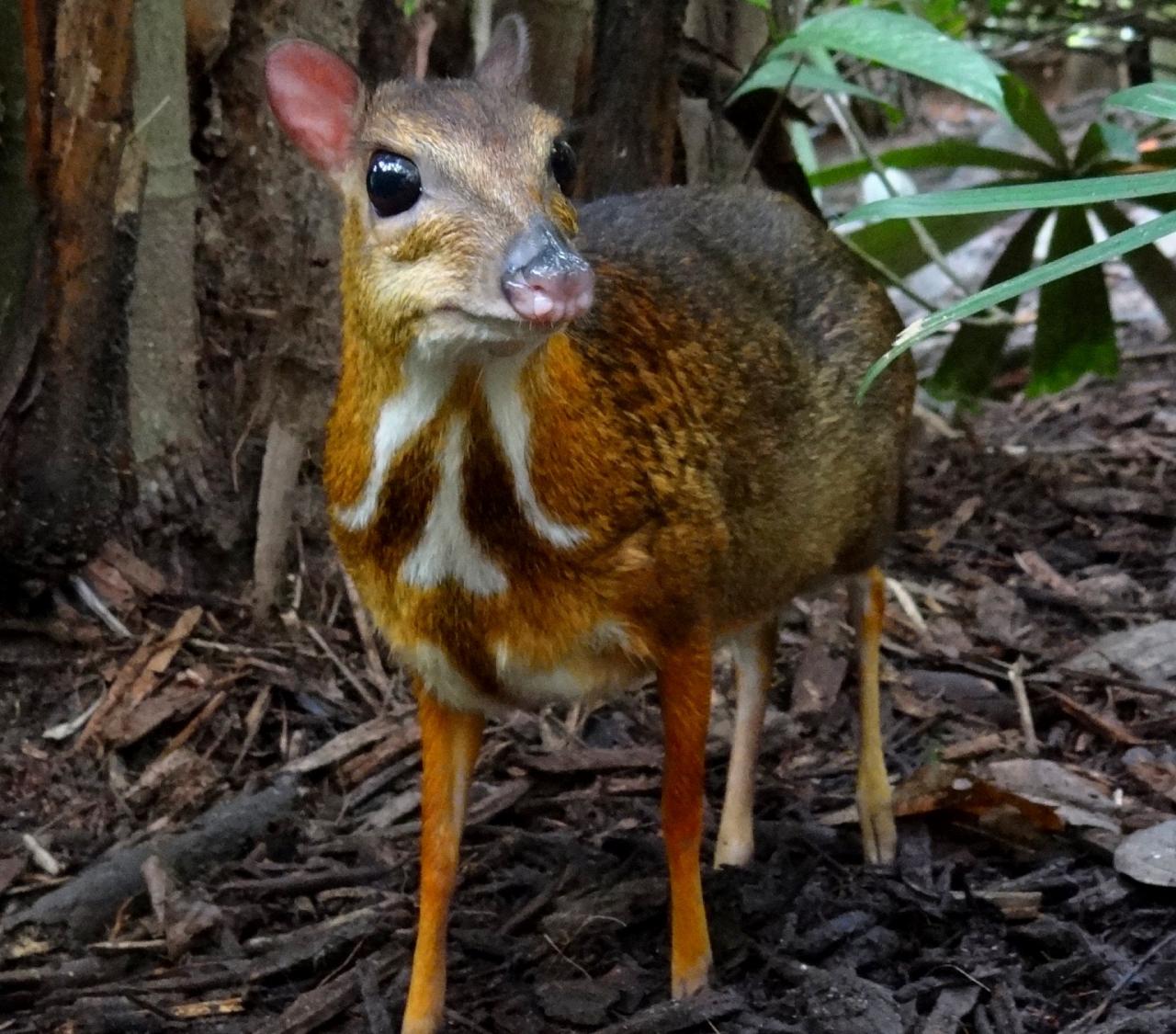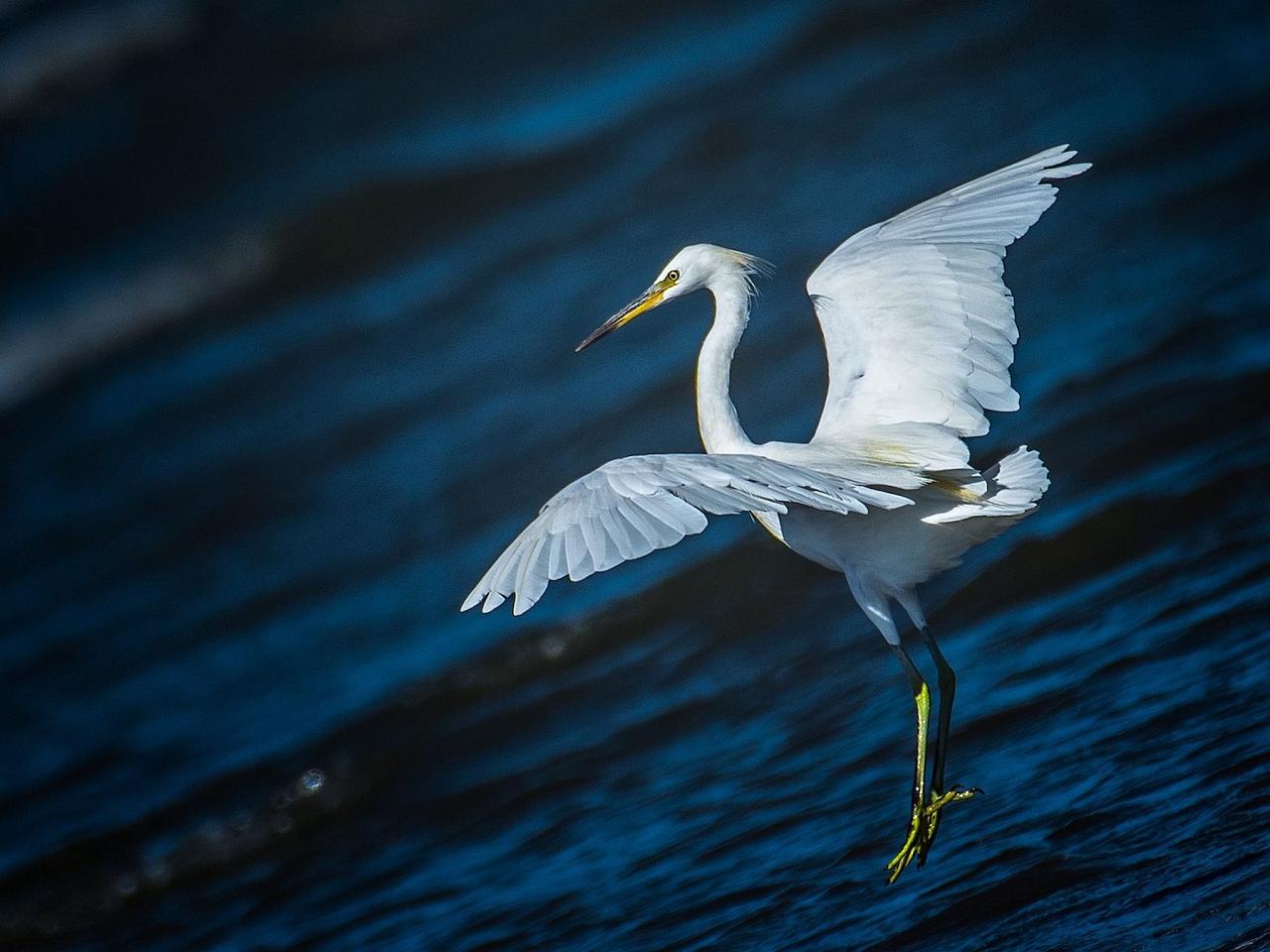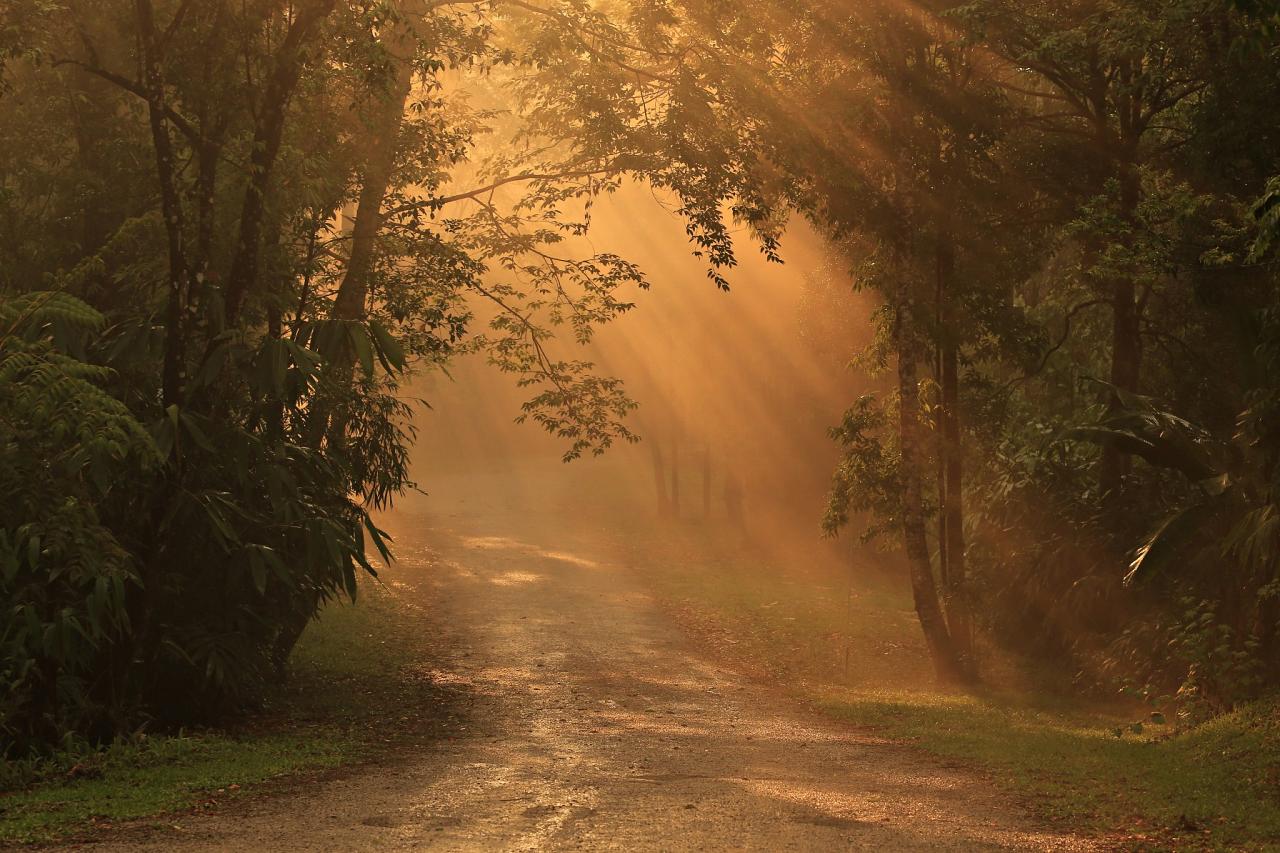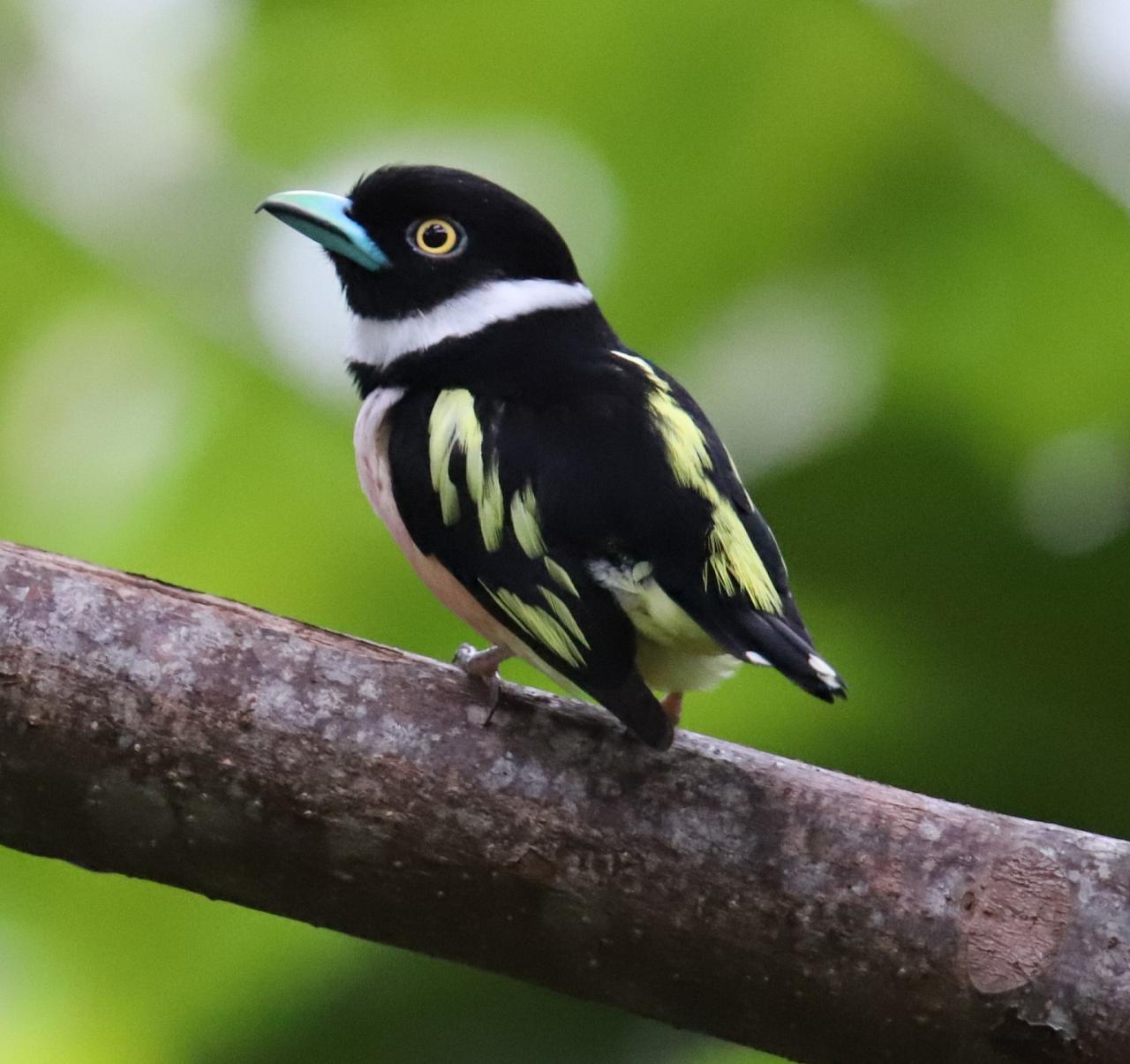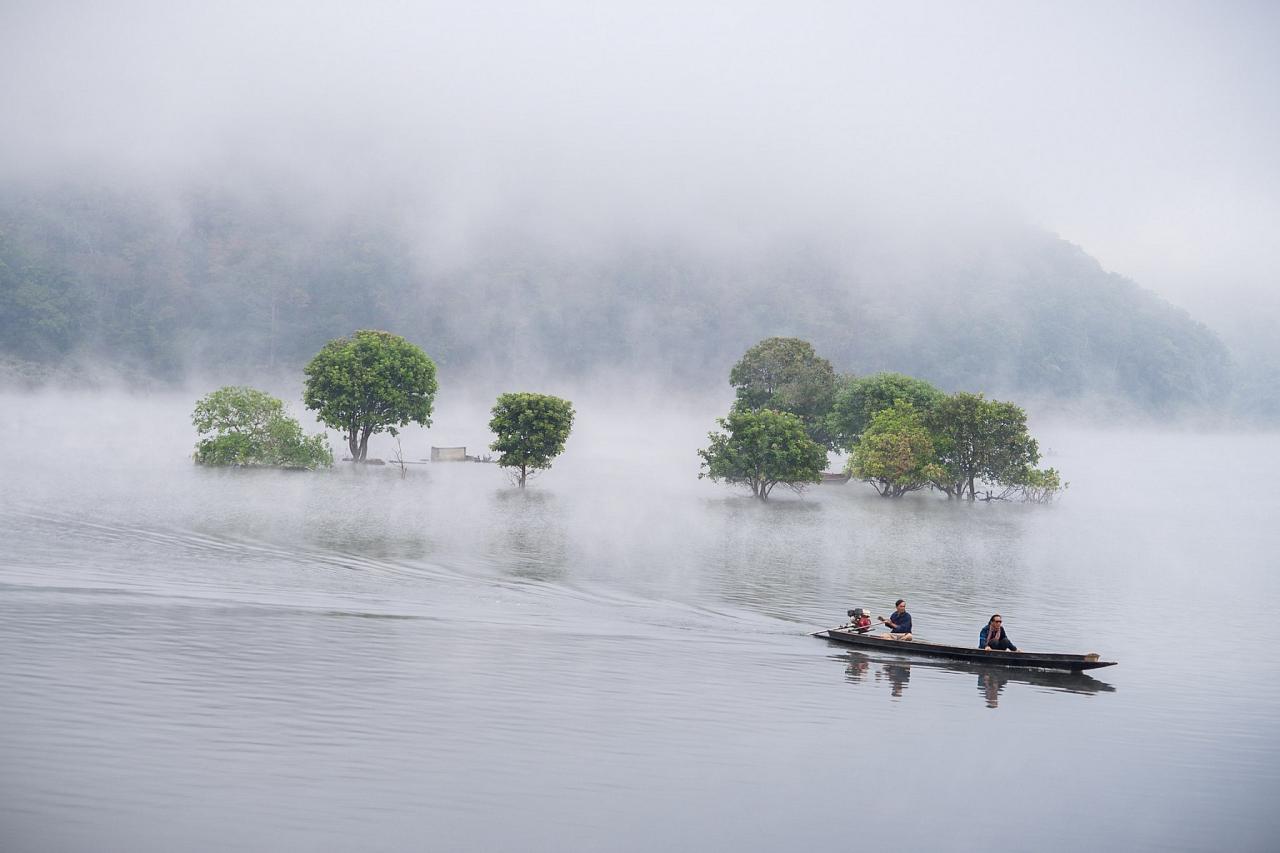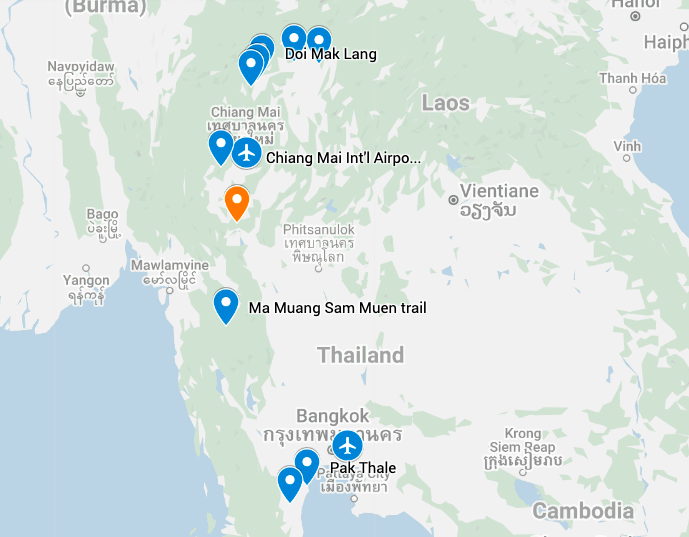- Overview
- Full Itinerary
- Photo Gallery
- Costing
- Travel Details
- Trip Reports
- Guides
- Map
- Know Before You Go
Thailand, often called the “Land of Smiles,” is a country of great natural beauty with important national parks and abundant birding. This Naturalist Journeys adventure lets you explore this friendly country with experts: visit salt farms and mudflats teeming with thousands of migratory shorebirds, misty montane forests alive with flocks of colorful species, and verdant lowland forests that ring with the calls of colorful broadbills and hornbills. Thailand is also a vital wintering ground for a wide variety of migrants from Siberia and China, many of which we can see on our February visit. There is no better introduction to birding in the eastern part of Asia.
Our tour focuses on two provinces in Thailand. Chiang Mai province in the north contains the southernmost foothills of the Himalayan region. The other province we visit is Petchaburi, just west of Bangkok. Shorebirds fill the saltpans along its coastline, offering some of the best shorebirding on Earth. The star here is the critically endangered Spoon-billed Sandpiper. Kaeng Krachan National Park in its interior is the largest and most biodiverse forested areas in the region.
Imagine a Great Hornbill, the size of a swan, glide overhead; a Blue Pitta, intricately patterned, appear like a jewel from a thicket; or a Black-and-yellow Broadbill, painted in pink, yellow, white and black, sitting motionless on a branch. These are some of the experiences we hope for at Kaeng Krachan. There is also a good chance for a few mammals: White-handed Gibbon, Lesser Mouse Deer and Dusky Langur with a chance, even, for the iconic Asian Elephant or Asiatic Leopard.
Tour Highlights
- Explore Doi Inthanon, birding forests of the tallest mountain in Thailand (over 8,000 feet) for colorful birds typical of the Himalayas such as Chestnut-vented Nuthatch, Yellow-cheeked Tit, Large Niltava, and Green-tailed Sunbird
- Wander through a hill-tribe market in the northern mountains for artisanal crafts and other cultural items
- Seek out jewel-like pittas in the undergrowth at Kaeng Krachan, birds so beautiful that they inspired a man’s obsession to see every one of these elusive avian gems
- Marvel at the sheer number and diversity of shorebirds at Pak Thale, while learning about migration and conservation issues facing endangered species like Spoon-billed Sandpiper, Nordmann’s Greenshank, and Chinese Egret
- Enjoy Thailand’s world-famous cuisine, known for its enthusiastic use of fresh herbs and spices.
Trip Itinerary
Itineraries are guidelines; variations in itinerary may occur to account for weather, road conditions, closures, etc. and to maximize your experience.
Tues., Feb. 17 Arrivals in Chiang Mai
Our tour officially starts today. Many flights route to Chiang Mai (CNX) through San Francisco and Seoul, Korea (ICN) but you may also look at other routings, including coming north from Bangkok. Our travel agent can be very helpful, and we pay her ticketing fee. Please let us know if you would like us to connect you with her.
Representatives from our local company meet you at the Chiang Mai International Airport for our transfer to our modern hotel in Chiang Mai, a bustling and traditional Thai city that was once the seat of the Lanna Kingdom. Known for its abundance of intricate and ornate temples and bustling markets, Chiang Mai is a fun place to explore should you choose to come in early.
This evening we enjoy a welcome dinner with an orientation as the excitement builds for the days ahead. Our hotel is near the old city, and its setting and hospitality set a great tone to start our tour.
Accommodations in Chiang Mai (D)
We recommend that you arrive a day or two early in Chiang Mai or Bangkok to adjust before starting the tour. There are regular and inexpensive direct flights from Bangkok to Chiang Mai.
Wed., Feb. 18 Mueng Sam Ma Lotus Swamp & Doi Lang West
After a delicious early morning breakfast (6am) at the Amora Hotel, we drive a short distance to Mueng Sam Ma lotus swamp, a small area of wetlands and overgrown pools on the outskirts of Chiang Mai with views of the surrounding mountains. This area gives us a great introduction to the birds of Thailand with a lot of open country and wetland species in a short space of time. Asian Openbills feeding in the shallows and flocks of Lesser Whistling Ducks will welcome us as we arrive, and we can spot Gray-headed Swamphen and Pheasant-tailed Jacana creeping among the lotus flowers along with Great Egret, Purple Heron, Gray Heron and Yellow Bittern. A couple of specialities of this site are also some of the more cryptic; Pallas’s Grasshopper Warbler and Eurasian Wryneck. More colorful are Common Iora, White-throated Kingfisher, and the tiny little Scarlet-backed Flowerpecker. This will be a really good start to our tour.
After a few hours, we drive to the town of Fang for lunch before we continue our journey to Doi Lang. Lying on the shoulder of Thailand’s second highest peak—Doi Pha Hom Pok—this site is part of the most extensive remaining tract of evergreen hill forest in the region. As we walk the trails, we watch for a multitude of unique species of Himalayan and Chinese affinities, making it one of the most popular sites in the entire country for birdwatchers. On our first afternoon here, we stop by stake-outs for some of these: the tiny but oh-so-blue Ultramarine Flycatcher, the bizarre Rusty-cheeked Scimitar-Babbler, the adorable Spot-breasted Parrotbill, and others.
Our hotel consists of a collection of cabins among orchard trees run by a local family on the bank of the Kok river. This is a nice base for the next few days with excellent local food.
Accommodations at Thatorn Garden Home or similar (B,L,D)
Thurs., Feb. 19 Doi Lang East
After breakfast at our accommodation, we continue our exploration of this wild area in search of specialties that are easier to see here than elsewhere in Thailand. Birding around the entry gate for the first hour of the day introduces us to some of the birds of the mountain before we board some local transport for a rather bumpy ride to the higher elevations. The journey is certainly worth it with species that include the amazing Scarlet-faced Liocichla, Whiskered Yuhina, gangs of noisy Dark-backed Sibias, Himalayan Bluetail, Large Niltava, colorful Black-eared Shrike-Babbler, and Silver-eared Laughingthrush all waiting for us.
After having a picnic lunch with a view and sharing a few moments of our morning here, we meander down the mountain for some afternoon birding in the rice paddies of Thatorn. Perhaps due to the long presence of farming in the region, a wide variety of birds have adapted to the habitat here: Pied Harrier, Citrine Wagtail, Green Sandpiper, and perhaps even the endangered Yellow-breasted Bunting are all possible.
Accommodations at Thatorn Garden Home or similar (B,L,D)
Fri., Feb. 20 Fang Hot Springs | Chiang Saen
We enjoy a nice and easy morning today with a visit to nearby Fang Hot Springs, known to be a reliable place for Spot-winged Grosbeak. Here boulders dot an open green space surrounded by forest; plumes of steam rise from the ground in a whimsical geologic display. The hot springs themselves (numbering around fifty in all) are a reminder of the geologic forces that ultimately created these mountains. This is a good spot for finding Asian Barred Owlet, flocks of colorful Long-tailed Minivets, the splendid White-faced Jay, Blue Rock-Thrush, and many other species. After birding, we can enjoy a mid-morning iced coffee and admire the lovely scenery of this site.
By mid-morning, we will leave Fang and make a journey of around 2 hours to the small town of Chiang Saen where we have lunch on the banks of the Mekong River. After checking into our comfortable hotel, we can spend the afternoon checking out a variety of wetland areas to look for local specialties such as Small Pratincole, River Lapwing, Indian Spot-billed Duck, Burmese Shrike, and much more besides. The real ornithological highlight here is the harrier roost. From a wetland overlook, we will witness large numbers of harriers coming in to roost. At first they come in one by one, but by the time the light is failing, there can be hundreds of Pied Harriers and Eastern Marsh Harriers wheeling around before they plunge into the wet vegetation to roost. Our hotel is just a short drive away where we will have dinner.
Accommodation at Siam Triangle Hotel or similar (B,L,D)
Sat., Feb. 21 Chiang Saen
After breakfast at the hotel we spend the day visiting various locations around Chiang Saen in search of birds that include Small Pratincole, River Lapwing, Brown-throated Martin, Freckle-breasted Woodpecker, Rufous-winged Buzzard, Purple Sunbird, Ruddy-breasted Crake, Lanceolated Warbler, Pallas’s Grasshopper Warbler, Citrine Wagtail, Jerdon’s Bushchat, and many others. This area of Thailand receives more national rarities than most other locations so we act on any current information on key species that we have.
It gets very hot here in the middle of the day so we take a break at the hotel after having lunch at a local restaurant on the Mekong river.
Accommodation at Siam Triangle Hotel or similar (B,L,D)
Sun., Feb. 22 Doi Tung Botanical Gardens | Fang
The Doi Tung Botanical Gardens has become a good one for rare over wintering thrushes so we need to be up early and on site to be the first at the feeding station, about 45 minutes away. We hope that species such as Eyebrowed Thrush, Black-breasted Thrush, White-tailed Robin and perhaps Grey-winged Blackbird are present this year. This is a scenic location to spend the morning in with other birds to enjoy including Blue-winged Minla, Black-throated Sunbird, Hill Blue Flycatcher and many others. In some years Rusty-naped Pitta, Hodgson’s Frogmouth, Scaly Thrush and Purple Cochoa have been performing here. Fingers crossed for at least one of these.
Depending on what we have seen previously we make the drive back to the town of Fang via one/two sites close to the town of Chiang Rai where we can look for rare ducks, Wire-tailed Swallow, Small Pratincole. After check in at our hotel at Fang we will have an early finish.
Accommodations at Tangerine Ville Hotel or similar, Fang (B,L,D)
Mon., Feb. 23 Doi Lang West
We spend the day today at Doi Lang West, devoting much of the morning to look for Mrs. Hume’s Pheasant in pine forest. In this habitat we should also find another specialty, Giant Nuthatch, as well as Rufous-backed Sibia, Grey-crowned Warbler, Olive-backed Pipit, Little Pied Flycatcher, Long-tailed Minivet, and by checking out flocks here we might be able to find Himalayan Cutia and Grey-headed Parrotbill too. There is also a good chance of Mountain Bamboo Partridge in this area as well as Chestnut-bellied Rockthrush, Rufescent Prinia, Greater Yellownape, Large Cuckooshrike and others.
We also spend time in other spots along the mountain looking for species in slightly moister forest too that can include Marten’s Warbler, Hume’s Treecreeper, Large Niltava, Rufous-bellied Niltava, Black-throated Bushtit, Golden Babbler and many other species. We can also check out the feeding areas for birds we didn’t connect with previously or for more views of the usual suspects. There is another chance to look for Mrs. Hume’s Pheasant in the late afternoon.
Accommodations at Tangerine Ville Hotel or similar, Fang (B,L,D)
Tues., Feb. 24 Doi Ang Khang
Today we visit Doi Ang Khang. We leave at 6:15 AM to be at the right place by 7:00 for what should be an easy Giant Nuthatch. This is also a good spot for Chestnut-bellied Rockthrush, Eyebrowed Thrush, Rufous-gorgetted Flycatcher, Golden-throated Barbet, Striated Bulbul, Slender-billed Oriole, Buff-throated Warbler, Blyth’s Shrike-babbler, and many other birds.
After this we visit the King’s Project area which usually gives us good views of Silver-eared Mesia, Yellow-bellied Warbler, Black-breasted Thrush, Hill Blue Flycatcher, Mrs Gould’s Sunbird, Black-throated Sunbird, Chestnut-flanked White-eye, and it often provides some surprises—it is a very pretty area and birding here is pleasant.
We have time to visit a military camp for Yellow-streaked Warbler, Daurian Redstart, and some nice views into Myanmar before having lunch in a nearby village. After this we can check out the Chinese cemetery area for Brown-breasted Bulbul, Little Bunting, and a few other species before heading back down the mountain for an early finish with some downtime before dinner.
Accommodations at Tangerine Ville Hotel or similar, Fang (B,L,D)
Wed., Feb. 25 Guide’s Choice Morning | Doi Inthanon
What we do this morning really depends on what we have seen over the previous days and where the birding has been best. We can revisit either Doi Lang West, if we need another attempt to see Mrs Hume’s Pheasant, or we can revisit the beautiful scenic areas of Doi Ang Khang. It is nice to have a bit of flexibility so that we enjoy the best of what the area has to offer.
By late morning, we will begin our journey towards Doi Inthanon. This is our longest drive of the trip, and we will leave in plenty of time so that we can make some rest stops along the way and arrive at our accommodation in good time. The gardens of Inthanon Highland Resort are lovely, and we should have time to do some birding around here or just take a break if so desired. Finding Spotted Owlet and Brown Boobook is usually fairly easy, and both species are active before it gets properly dark.
Accommodations at Inthanon Highland Resort or similar (B,L,D)
Thurs., Feb. 26 Doi Inthanon National Park
We spend all day today at Doi Inthanon National Park. Nicknamed the “roof of Thailand,” Doi Inthanon (ca. 8400 feet) is so high and so cold that local tourists flock to the summit on cold winter mornings to see frost — a novel experience to many local residents here who have never seen ice or snow! The road that winds up this magnificent granite mountain also happens to transect a diverse variety of habitats, including dry dipterocarp woodland, mixed deciduous forest, pine forest, and montane forest. By remaining in the lowlands as our base, we explore the various elevations and their associated habitats in search of their own characteristic bird life— the park is home to some 380 species of birds!
On our way up the mountain we stop at a waterfall to search for Slaty-backed Forktail, White-capped Redstart, and Plumbeous Redstart before walking a track at around 1800m. This takes us through a variety of forest types and is a good spot for Hume’s Treecreeper, Clicking Shrike Babbler, Silver-eared Mesia, and a couple of skulkers including Pygmy Wren Babbler and Slaty-bellied Tesia. Other birds we are keen to find here include Golden-throated Barbet, Short-billed Minivet, White-throated Fantail, Yellow-bellied Fantail, Large Niltava, Vivid Niltava, White-headed Bulbul, Wedge-tailed Green Pigeon, and Asian Emerald Cuckoo.
After lunch we can visit the summit for the remainder of the afternoon to have our first chance at the specialties here. We can expect flocks of semi-tame birds to include Chestnut-tailed Minla, Ashy-throated Warbler, Rufous-winged Fulvetta, Blyth’s Leaf Warbler, Mrs. Gould’s Sunbird, Green-tailed Sunbird, and perhaps Yellow-browed Tit. On the summit boardwalk we get our first chance at Rufous-throated Partridge, White-browed Shortwing, and some other skulkers before heading down to our accommodation.
Accommodations at Inthanon Highland Resort or similar (B,L,D)
Fri., Feb. 27 Doi Inthanon National Park
A cool and crisp morning at the summit of Doi Inthanon starts off our day. The birding starts right from the parking lot, where the vegetation along the edges attracts many of the bolder mountain residents such as Silver-eared Laughingthrush, Green-tailed Sunbird, and Dark-backed Sibia. The Ang Ka Boardwalk nearby transects a bog full of trees festooned with moss. Within this magical environment, we hope to see some of the more secretive denizens of this mountain: Rufous-throated Partridge, White-browed Shortwing, and maybe even Eurasian Woodcock. Feeding flocks up here may contain the pixie-like Yellow-bellied Fairy-Fantail and Yellow-browed Tit.
As the morning passes, we steadily move downslope with several stops along the way through excellent forest trails. The possibilities seem almost endless here, as feeding flocks can be exciting and diverse: Gould’s Sunbird, Small Niltava, Gray-throated Babbler, Chestnut-vented Nuthatch, White-throated Fantail, Verditer Flycatcher, and many more.
We finish in the afternoon at a conservation site for Blossom-headed Parakeet. As we watch these lovely birds come in to roost, we learn about the conservation efforts underway to protect them.
Accommodations at Inthanon Highland Resort or similar (B,L,D)
Sat., Feb. 28 Doi Inthanon | Bangkok
We make one final visit to Doi Inthanon National Park. We usually visit a blind which overlooks a small stream. Here we hope for fine views of Slaty-backed Forktail, White-crowned Forktail, and Dark-sided Thrush. There are usually a few surprises here too, perhaps we can spot a Lesser Shortwing emerge from the undergrowth!
After a short morning here, we drive back to the airport in Chiang Mai and take a short flight to Bangkok. Here we have some time to relax and catch up with emails, photo processing, or just read a book before dinner.
Accommodations at Amari Don Muang Hotel or similar (B,L,D)
Sun., Mar. 1 Pak Thale | Laem Pak Bia
We have an early morning start today in order to make the two-hour drive to Pak Thale, an expansive area of saltpans, shrimp ponds, and coastal mudflats. Flat and open, we may be able to see local salt farmers harvesting salt that has been neatly lined up in big white piles. This area hosts perhaps one of the greatest concentrations of shorebirds in the world, including up to about thirty different species all told. We make a special effort to see the charismatic and critically endangered Spoon-billed Sandpiper, as well as the endangered Nordmann’s Greenshank, Chinese Egret, and Far Eastern Curlew.
After a nice local lunch, we take a boat trip out along the river and out to a sand bar on the estuary. This is always an enjoyable trip and with birds that include Malaysian Plover, Pacific Reef Egret, Great Crested Tern, and White-faced Plover – a great little birding excursion.
Our hotel is a small chic hotel in the nearby town of Petchaburi.
Accommodations at Sun Hotel Phetchaburi or similar (B,L,D)
Mon., Mar. 2 Local Rice Fields | Transfer to Baan Maka
After breakfast we drive a short distance to some rice fields to look for a number of new species that should include Chestnut-capped Babbler, Oriental Darter, Cotton Pygmy Goose, Stork-billed Kingfisher, Black-capped Kingfisher, Bronze-winged Jacana, Yellow Bittern, Asian Openbill, Black-browed Reed Warbler, Asian Golden Weaver, Baya Weaver, Yellow-bellied Prinia, and perhaps Cinnamon Bittern, White-browed Crake, and Ruddy-breasted Crake.
We then drive an hour to our accommodation for lunch and afterwards we visit a nearby hide that overlooks a feeding and bathing area where we should see a lot of birds come to visit through the afternoon. Likely species include Scaly-breasted Partridge, Large Scimitar Babbler, Lesser Necklaced Laughingthrush, Puff-throated Babbler, Red Junglefowl, Kalij Pheasant, Emerald Dove, Siberian Blue Robin, Greater-necklaced Laughingthrush, Tickell’s Blue Flycatcher, and Black-naped Monarch.
Accommodations at Baan Maka or similar (B,L,D)
Tues., Mar. 3 – Thurs., Mar. 5 Kaeng Krachan National Park
Kaeng Krachan National Park gives the group the opportunity to bird tropical forest. Kaeng Krachan National Park is the largest national park in Thailand, forming part of a much larger forest complex that provides refuge for many of Asia’s rarest mammals and 420 species of birds. Indeed, this national park is of international conservation importance due to the vastness and excellent condition of its tropical evergreen forest.
In the mornings we visit the lowlands of the park. This is mostly moist forest and plays host to a lot of exciting species. Key birds that we have a high chance of seeing include the fantastic Great Hornbill, Black-thighed Falconet, Sultan Tit, Grey-rumped Treeswift, Oriental Pied Hornbill, Black-and-yellow Broadbill, Greater Flameback, Common Flameback, Greater Yellownape, Orange-breasted Trogon, Black-and-red Broadbill, Green-eared Barbet, Blue-eared Barbet, Blue-bearded Bee-eater, and Thick-billed Green Pigeon while common birds include Asian Fairy-bluebird, Ochraceous Bulbul, Ruby-cheeked Sunbird, Asian Brown Flycatcher, Green-billed Malkoha, Pin-striped Tit Babbler, and many others.
In the afternoons we spend time at higher altitudes (if accessible). Here there are some species that we are unlikely to find elsewhere on this tour including Red-headed Trogon, Ratchet-tailed Treepie, Rufous-browed Flycatcher, White-crested Laughingthrush, Black-throated Laughingthrush, and a few others.
At lower altitudes there is a wealth of other species that are rarer but we have a fair chance of finding some of the following: Banded Kingfisher, Banded Broadbill, Tickell’s Brown Hornbill, Blue Pitta, Silver-breasted Broadbill, Crimson-winged Woodpecker, White-browed Piculet, Common Green Magpie, Wreathed Hornbill, and Golden-crested Myna to mention a few.
Accommodations at Baan Maka Nature Lodge or similar (B,L,D)
Fri., Mar. 6 Birding Back to Bangkok
We work our way back to Bangkok this final morning together. We make a plan to look for any species we may have missed, perhaps visiting another hide for a few hours, perhaps just enjoying birds in the garden of the accommodation. Then, after lunch we drive back to Bangkok to a convenient airport hotel; the journey takes three to four hours depending on the traffic.
Accommodations at a Bangkok airport hotel (B,L,D)
Sat., Mar. 7 Departures
Departures today are at your leisure today. (B)
Cost of the Journey
Cost of the journey is per person, based on occupancy: $5990 DBL / $6940 SGL, from Chiang Mai, departing Bangkok. The cost includes 18 nights’ accommodations; all meals as stated in the itinerary; group airport transfers; internal flight; ground transportation; professional guide services; park, preserve, and other activity fees; and miscellaneous program expenses.
NEW! all tips other than your NJ guide (optional) and local guide are included (this includes tips for your driver, lodge and staff, day activities, meals and other services).
Cost does not include round-trip airfare to Chiang Mai and from Bangkok, or personal expenses such as laundry, telephone, or drinks from the bar.
*Referenced price is based on exchange rate. Subject to change if there is more than a 5% increase. See Terms & Conditions for details.
Travel Details
Please plan to make air travel plans only after the minimum group size has been met. We will send you a confirmation email as soon as the trip has been confirmed.
Arrival Airport: Arrival Airport is Chiang Mai International (CNX)
Arrival Details: Plan flights to arrive February 17, 2026 in time for introductions and the welcome dinner at 6:30PM. We recommend coming in early to rest up from your flight.
Departure Airport: Suvarnabhumi Airport (BKK) in Bangkok
Departure Details: Plan flights to depart March 7, 2026 at your leisure.
Travel Tips: If you are interested in early nights, we are happy to book you at our first night tour hotel. If you prefer to book something you see online, please feel free to do so – it’s an easy city to get around, so a transfer on the tour start day by taxi is reasonable. We do not have recommendations for Bangkok as there are SO many places to choose from – our travel agent may be able to assist you there.
Entry Requirements: See "Essential Information" section under the "Know Before You Go” tab.
Browse below for trip reports and species lists from past versions of this and other tours from this destination.
Thailand
- January 2014 (Scouting Trip by Carlos Sanchez)
- February 2019
- February 2023
- February 2024
- February 2025
-
Nick Upton - Thailand and Asia Expert

Nick has been pursuing birds since the age of six after being shown a Dartford Warbler by his father on a family holiday. After traveling and birding in the Pacifica and Southeast Asia, Nick settled in Thailand over twenty years ago and now has over a decade of experience in leading bird tours throughout Asia. Widely recognized as the leading guide for Thailand, he can find difficult species and interpret the ecology of the bird, as well as the conservation issues many species face.
Other trips with Nick Upton - Thailand and Asia Expert
-
 Indonesia's Best BirdingSeptember 9 - 27, 2026
Indonesia's Best BirdingSeptember 9 - 27, 2026
-
-
Hugh Simmons
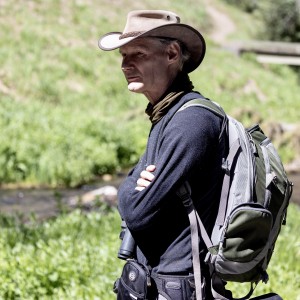
Hugh Simmons' interest in photography began when he was a young boy, as did his love of nature. He earned a Bachelor of Science in Biology during which he was “sparked” by a chance encounter with an Eastern Towhee. Not long after college he took up birding with, of course, a desire to photograph birds. Today he enjoys sharing his decades of photographic knowledge to help others get the most out of their photography whether it be of birds, landscapes, flowers, other wildlife or people. Hugh is a founding member of the North American Nature Photographers Association and served on the board of directors of the National Audubon Society. He is a long time board member of the Chesapeake Audubon chapter in Maryland and is the Audubon Climate Watch Coordinator for his area. Hugh also volunteers with the Cape May Bird Observatory and the Phoenix Wildlife Center.
Photo credit: Mike West
Other trips with Hugh Simmons
-
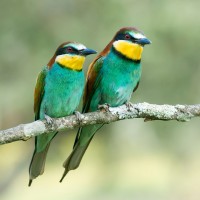 Lesvos, Greece: Migration! FULL - See our Portugal trip!April 26 - May 3, 2026
Lesvos, Greece: Migration! FULL - See our Portugal trip!April 26 - May 3, 2026 -
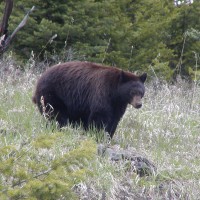 Yellowstone: Birds, Bears & Wildlife FULL - See our June departure!May 28 - June 3, 2026
Yellowstone: Birds, Bears & Wildlife FULL - See our June departure!May 28 - June 3, 2026 -
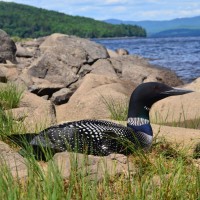 Summer in Maine: From Acadia to the NorthwoodsJuly 7 - 14, 2026
Summer in Maine: From Acadia to the NorthwoodsJuly 7 - 14, 2026 -
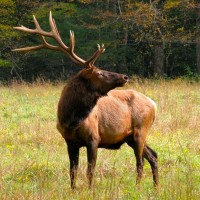 Yellowstone in The FallSeptember 26 - October 2, 2026
Yellowstone in The FallSeptember 26 - October 2, 2026
-
Essential Information +
Pace & Protocols +
Packing List +
Suggested Reading List +
Useful Links +
Photo credits: Banners: Greater Flameback, Tareq Uddin Ahmed; Oriental Pied Hornbill, Chainfoto; Black-naped Monarch, Tareq's Photography; Black and Red Broadbill, Jason Thompson; Lesser-necklaced Laughingthrush, Khoitran1957; Dusky Langur, Dariinpinguin; White-lipped Viper, Rushen; Salt Farmers, JJ Harrison; Lotus Flower Vyacheslav Argenberg; all Wikimedia Commons; Chestnut-flanked White-eye by Carlos Sanchez; Scarlet-faced Liocichla by Carlos Sanchez; White-handed Gibbon by Carlos Sanchez; Doi Inthanon Waterfall by Carlos Sanchez; Lotus Flower by Carlos Sanchez; Painted Stork by Carlos Sanchez; Himalayan Bluetail by Carlos Sanchez; Spoon-billed Sandpiper by Carlos Sanchez; Gallery, all via Wikimedia Commons: Yellow-cheeked Tit, Francesco Veronesi; Great Hornbill, Koshy Koshy; Spoon-billed Sandpiper, Tareq's Photography; Dusky Langur, Roughdiamond21; Blue-winged Pitta, JJ Harrison; Sun Bear, Rushen; Hooded Pitta, JJ Harrison; Green-tailed Sunbird, Dibyendu Ash; Female Giant Hornbill, Lip Kee Yap; Indochinese Roller, Song Phi Nong; Waterfall at Doi Inthanon National Park, Kwhisky; Lesser Mouse Deer, Bjørn Christian Tørrissen; Chinese Egret, Kirkamon; Kaeng Krachen National Park, Petchaburi; Black-and-yellow Broadbill, Nina Hale; Mae Ping National Park, (extension only) Beeohwhy


